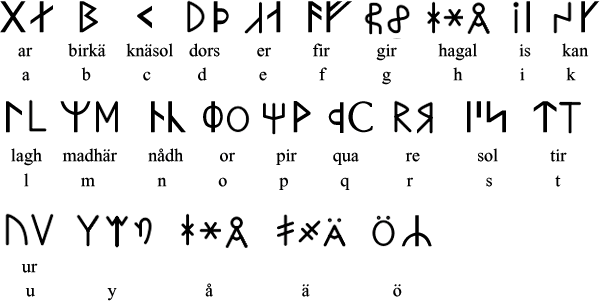This alphabet was mainly inscribed into wood and stone on furniture, buildings, bowls, measuring sticks, etc. to write the names of the owners and/or makings. The earliest known inscription in Daelcarlian runes, for example, appears on a bowl from Åsen, a village in Älvdalen parish, and says "Anders has made (this) bowl anno 1596".
Notable features
- Type of writing system: alphabet
- Direction of writing: left to right in horizontal lines
- Used to write: mainly Elfdalian
Dalecarlian runes

Notes
- The names of the letters come from Runakänslanäs läräspan (The first knowledge of runic learning) a copperplate engraving by Johannes Bureus dating from 1599.
- The shapes of the letters changed over time, so most letters have several different shapes.
Links
Information about Dalecarlian Runeshttp://en.wikipedia.org/wiki/Dalecarlian_runes
http://www.voluspa.org/swedenlaterdays.htm
http://www.khm.uio.no/forskning/publikasjoner/runenews/7th-symp/preprint/Gustavson.pdf
No comments:
Post a Comment
Note: Only a member of this blog may post a comment.